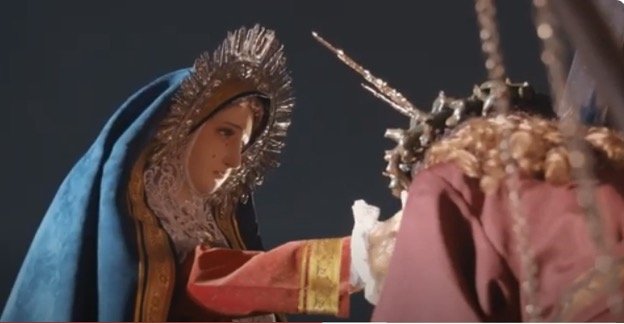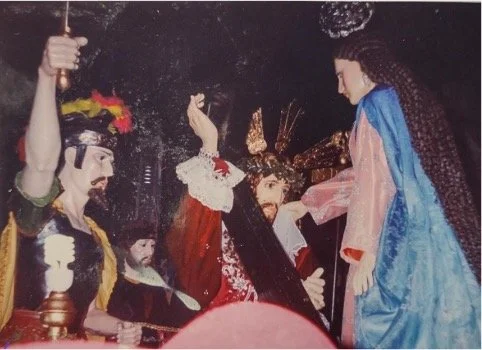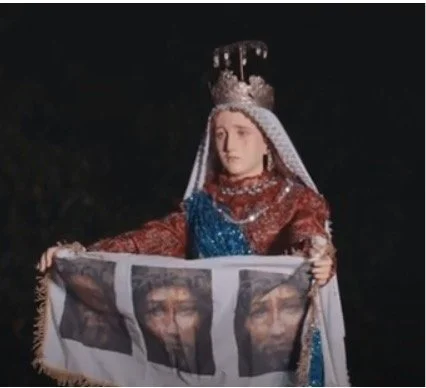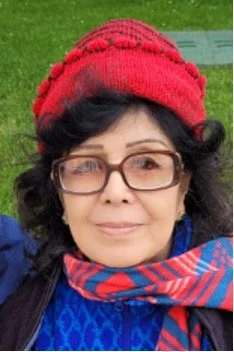Paete’s ‘Moving Saints’ of Holy Week
In Paete, Laguna, a small town in Luzon south of Manila, the quiet, simple life of the people rouses with religious fervor on days before Easter, amid the flourish and grandeur of the town’s “moving” saints. The images are wooden statuaries, all decked in rich biblical vestments. Two of these figures are staged to re-enact milestones in Jesus’ painful journey to his death. The images carved by local craftsmen are made to breathe lives of their own for two nights during Semana Santa (Holy Week) tracing Jesus’ steps on streets suddenly turned theater, surrounded by pious parishioners and curious, mesmerized visitors. On other days of the Holy Week, close to 60 of such figures showcase the woodcarving talent of Paete’s craftsmen that earned the town’s title as the Carving Capital of the Philippines. These other images represent Jesus’ life events and those of his followers during his ministry.

Paete’s religious statues (Source Wikipedia)

The Maundy Thursday procession in Paete (Source: Gridcrosser)
The pageantry, called Salubong (Reunion) holds local somber spectators amazed even if they get to watch this event over and over again every year, without fail. The Salubong begins past sunset in the town square and continues in some major intersections amidst the typical neighborly encounters during early evening hours. Throughout the event, a mournful narration in archaic Tagalog, chanted in soaring and droning tones at significant and intense moments, provides a fitting perspective to the tableau. The script has not changed over the years and the challenge lies in live voicing (not recorded) by the male and female performers. Lately, however, voice talents have opted to read the narration but kept the uniquely intense ramping up and receding tone and pitch of the delivery.
The first Salubong episode reenacts the poignant scene in the 14th station of the cross as Mary, one among the throng of people following her son, meets the cross-burdened Christ. The encounter plumbs the depth of the shared grief between mother and son as their respective images are carried close together and Mary’s image is maneuvered to reach out with outstretched arms to embrace Jesus. The scene, the brief touch of Mary’s hand on Jesus’ face, evokes a wave of emotions from the crowd, resonating with Mary’s maternal anguish and raw pain.

The Virgin Mary embraces and touches her son, Jesus. (Photo courtesy Nicolo Diego)
The procession moves on to another part of town where Veronica supposedly lives. In the tableau, the image of Veronica, a woman witness to Jesus’ trek to Calvary, is quickly carried by a couple of men from a few feet away, and rushed to reach the rowdy scene. Shortly, Veronica is seen wiping Jesus’ bloody face with her veil, a brief and gentle pat on Jesus’ face long enough to show the contact between the veil and Jesus’ face. This done, the procession moves on, disrupted on intervals by shouts from “Roman soldiers” and rumbling sounds of drums thrown in for good measure.

Veronica wipes Jesus' face with her veil, revealing three faces imprinted on the cloth. (Photo courtesy of Fred Baltazar)
This solemnity climaxes in another Salubong or chance meeting of Veronica and Mary in another part of town. Here, Veronica performs the event’s highest point as she spreads her arms unfolding the piece of cloth that now bears three-like images of Jesus’ face. This is the instant that stirs the crowd into great frenzy. A female voice’s meandering dirge soars into sweeping high pitch over hushed murmurs from the crowd, providing a dramatic narration. In turn, the Virgin Mary in her own major act lifts her head, slowly unclasps her hands, and raises her right hand in blessing, acknowledging that she sees it all.

Veronica spreads her arms, presenting three images of Jesus' face captured on her veil. (Photo courtesy of Nicolo Diego)
The unique mechanism by which wooden images are made to move is held sacred in the town, requiring many hours of practice long before Holy Week to ensure precision at each encounter in the Salubong. Devoted male folks are trained over the years to keep alive this practice which is the core of the Salubong encounters.
The small town of Paete, Laguna, comes to life at Lent with religious statues famous for their “wooden acting.”
Many towns in the Philippines stage their versions of the Passion with local thespians playing apostles and Roman soldiers with plumed helmets and purple flowing robes. In Paete, the town’s actors garbed as Roman centurions trot on horseback around the neighborhoods while other “soldiers” run all over town with menacing masks and spears that amuse adults and frighten kids.
Good Friday funeral reenactments find Jesus lying in an ornate casket, comforted by weeping cherubs carrying the crown of thorns, nails, and other instruments of Jesus’ death.
Throughout Christendom, Christ’s death is remembered with quiet contemplation that explodes into cries of joy come Easter morning. The drama naturally lends to folk and serious theater in exciting renditions. Filipinos, especially in Paete, are no different. Across generations, from the time Spanish friars in 1864 introduced the European style of mounting images of saintly characters during Semana Santa, Paete townsfolk have all been spirited, creative, and devout participants in this pious saga of the Redeemer.
The author wishes to thank Dexjordi Lyle Sison for his assistance in the photos.

Connie Cagahastian Triggiano is the board secretary of Circa-Pintig, the community theater organization of Filipinos in Chicago. She has myriad interests including sewing, traveling, solving word puzzles, and reading humanities literature and historical and thriller novels.


No comments: